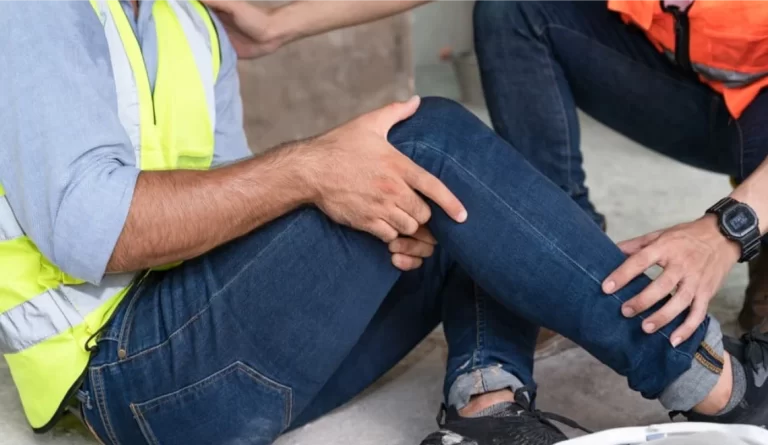Determining fault in a construction accident is often complicated because multiple parties, each with distinct responsibilities, play a role on these worksites. Large construction projects usually include the property owner, a general contractor, and various subcontractors, all with different roles.
Speaking to a New York construction accident lawyer about your position on the construction site is important as it affects who you can seek compensation from and even whether fault is relevant at all. For instance, if you’re injured while working for a construction company, you typically don’t need to prove fault and will instead file a workers’ compensation claim.
However, you might file a third-party personal injury claim if another company, contractor, or subcontractor caused your injury. This process involves identifying and proving the liability of the responsible party, which can be more challenging but might result in a higher financial recovery, as New York workers’ compensation caps won’t apply. The best way to learn your options for legal recourse is to schedule a consultation with an attorney.
Can Injured Construction Workers Sue For Injury?
Workers’ compensation rules generally prevent employees from suing their employers, which means injured workers can’t claim pain and suffering or other damages from their employer. However, the workers’ compensation system is in place as a form of risk management for employees that covers medical expenses and lost wages. To sue, you must prove your case falls under certain exceptions. Injury claims related to falls, scaffolding accidents, dropped objects, or specific safety violations may qualify you to file a lawsuit for additional damages. This process involves fault determination, accident investigation, and evidence gathering to establish employer responsibility or worker negligence.
Who Can Be Held Liable For a Construction Accident?
Depending on the facts of the case, different individuals might be liable for construction accident damages. Here are a few parties that might be liable in common accidents in the construction. A case analysis will help determine if construction injuries occurred because of safety violations or other forms of negligence.
General Contractors And Subcontractors
The project’s contractor must ensure onsite safety for workers, passersby, and visitors. General contractors are usually responsible for the work of subcontractors and employees and may be liable for accidents if they:
- Hire subcontractors with safety violations
- Fail to check subcontractor backgrounds
- Employ inadequately trained people
The general contractor may be liable if a subcontractor’s past safety issues lead to an accident. Subcontractors, workers, or building managers might also share responsibility.
Contractors must enforce safety protocols and regulations on-site. The contractor is likely liable if injuries occur due to unsafe conditions or procedures. Also, certain responsibilities cannot be delegated, and having someone else perform these tasks is considered negligence. A successful outcome in a construction accident case will need to include strong evidence of negligence.
Construction Site Owner
In New York, property owners must ensure safe conditions on their premises, including during construction or renovations. They can be liable for injuries, even if they didn’t directly cause them. If guests are invited to view construction and get injured, or if there are no safety warnings or proper site security, owners may be responsible.
Unlike workers’ compensation claims, legal claims against property owners aren’t subject to the same limitations. If the owner is negligent, you can seek compensation for medical expenses, lost wages, trauma, pain, and suffering. Such claims might involve construction liability, accident investigation, and fault analysis to determine duty breach and perform a liability and responsibility assessment.
Architects, Engineers And Design Professionals
Design professionals involved in a building project may be liable for accidents if their work falls below professional standards. Construction liability depends on factors such as:
- The contract obligations with the construction company
- The extent of their involvement
- The circumstances of the accident
Architects are responsible for creating plans that meet building codes and must oversee construction to ensure regulatory compliance. Failure to do so can lead to negligence claims. Engineers must ensure project safety, comply with safety codes, secure sites, perform inspections, and assess materials. Neglecting these tasks can make them liable for accidents. Land surveyors can be liable if they fail to accurately identify land concerns, measure boundary lines, or map locations, leading to non-compliance with local laws.
Product Manufacturers
If a construction site accident results from faulty equipment or products, the manufacturer or supplier of that defective item could be held accountable. Manufacturers are obligated to create safe, reliable products, and if a defect causes an accident, they may be liable for the resulting injuries. This liability applies to faulty machinery, tools, scaffolding, and other equipment used in construction. Causal factors, responsibility assessment, and evidence gathering are critical in these fault determination cases.
Insurance Company
Many NYC businesses must have workers’ compensation and liability insurance coverage, which compensates for medical bills and lost wages related to employee injuries. However, some construction workers might not receive full compensation and may sue their employer or its insurance provider. Although workers’ compensation typically prevents lawsuits against employers, exceptions exist.
Injured workers may also sue a third party, potentially holding both the third party and employer accountable. This process involves a great deal of evidence collection, including witness statements, site inspections, documentation review, and incident reporting to assess construction hazards, supervisory negligence, and worksite hazards. Compliance checks, hazard assessments, and safety audits are critical for identifying risk factors and ensuring safety enforcement.
Additionally, protective measures, safety training, and worksite policies play vital roles in maintaining operational standards and minimizing safety breaches due to employee conduct or other worksite hazards. Failure to take such precautions seriously can have costly and even grave consequences.
Should You Hire a Construction Accident Attorney
Proving your case in a construction accident lawsuit involves a careful analysis. Flaws in safety oversight practices, equipment malfunction, and other possible issues make for create risks in the construction industry. With so many potential causes of accidents and parties that might be at fault, proving your case in a construction accident lawsuit is a difficult and complicated process.
The outcome of your claim will depend on the ability to build a strong case. Hiring an experienced personal injury lawyer is the way to start pursuing a claim for compensation. Reach out to Gregory Spektor & Associates for a free consultation and case evaluation.



